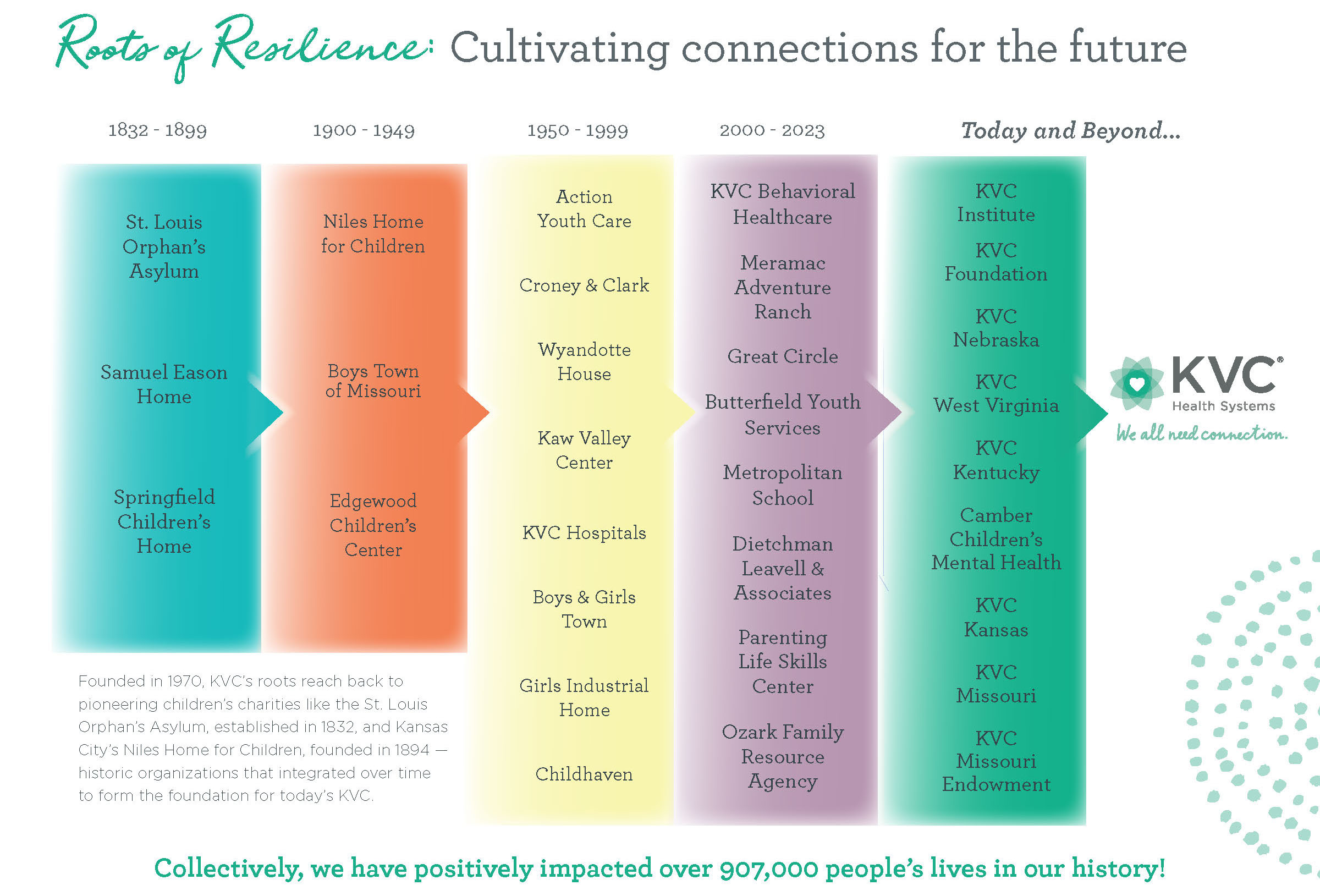What Does KVC Stand For?
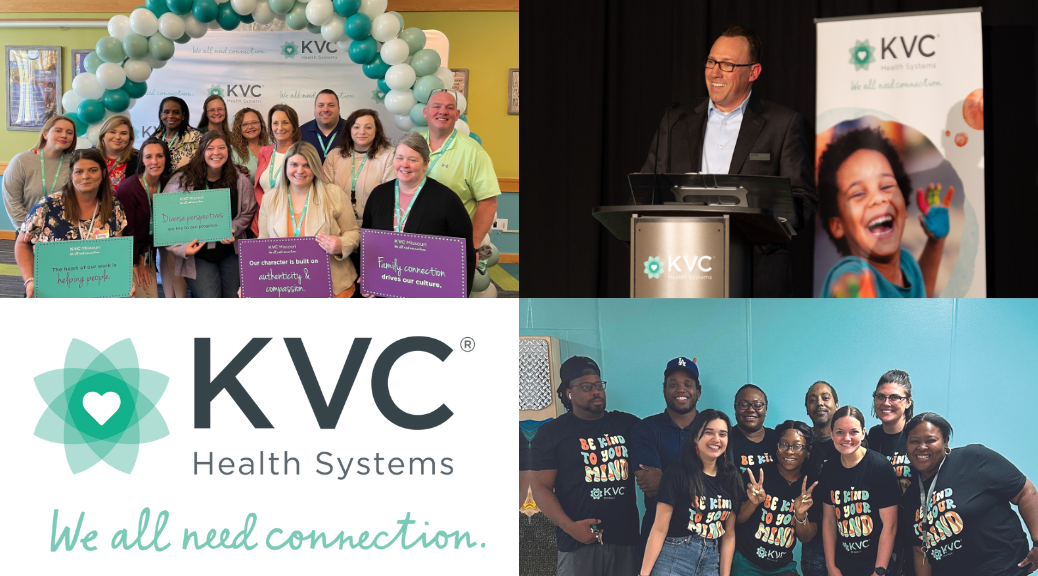
Have you ever wondered what the “KVC” in KVC Health Systems stands for? You’re not alone; it’s one of the most frequently asked questions we get.
Answering this question gives us a chance to tell you about our history and our future… both where we’ve been and where we’re going.
Do you believe every child deserves to be safe and connected to a strong family? Join us to receive a few inspiring stories each month and help end childhood adversity. Subscribe here!
Caring Women Founded KVC
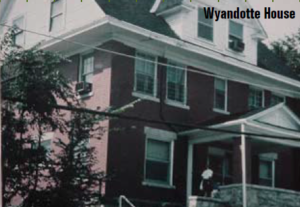 The organization that is now KVC Health Systems began in 1970 as a multi-story brick home in downtown Kansas City, Kansas called Wyandotte House. A group of caring women from the Junior League of Wyandotte and Johnson Counties created Wyandotte House because they saw children in need.
The organization that is now KVC Health Systems began in 1970 as a multi-story brick home in downtown Kansas City, Kansas called Wyandotte House. A group of caring women from the Junior League of Wyandotte and Johnson Counties created Wyandotte House because they saw children in need.
“I could see that there were kids being detained [at the Kaw View Detention Home] who didn’t belong,” said Ellen McCarthy, a founding mother of KVC. “They were good kids who were in detention because there was nowhere else for them to go.” (Notably, JoAnn Ball — a Junior League member at the time — and her family personally picked up the torch. Her children and grandchildren remain active in KVC’s leadership to this day.)
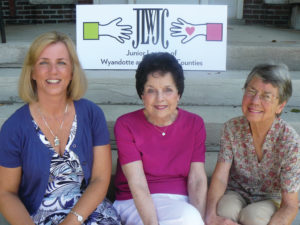
Gina McCord, Ellen McCarthy and Gail Anderson reminisce at the Junior League of Wyandotte and Johnson Counties
When Ellen became Junior League President, she had an opportunity to make a difference. She and three other Junior League members took out personal loans in order to buy a home. They created Wyandotte House, a home for boys. A married couple was hired to parent the boys sent to them by the courts. “Dad” went off to work each day. “Mom” stayed home and provided the stability the children so desperately needed. Besides providing a home for the adolescents, the “parents” were teaching the children what a healthy family life might look like. Wyandotte House grew and in 1994, the name was changed to Kaw Valley Center (yes – that’s what “KVC” originally meant).
KVC’s Positive Impact Grows Nationally
During the 1980-90s, KVC grew to represent one of the broadest child welfare and behavioral healthcare continuums of care in the nation. This made it possible for KVC to meet the needs of any child and family, extending all the way to inpatient children’s mental health hospitals when needed. KVC has emphasized research and education, drawing upon national experts and evidence-based practices to serve all children and families.
In 2003, to bring our name in line with the scope of our work, Kaw Valley Center became simply KVC Behavioral Healthcare. A few years later, the parent organization KVC Health Systems was created. KVC Health Systems has several nonprofit subsidiaries: KVC Kansas, KVC Kentucky, KVC Missouri, KVC Nebraska, KVC West Virginia and Camber Children’s Mental Health. Each is a nonprofit that provides direct services to children and families. Learn more about KVC’s history.
In 2023, we welcomed 800 employees from St. Louis, MO-based nonprofit Great Circle into KVC Missouri, and we’re honored to carry Great Circle’s mission forward. KVC now stands on the shoulders of pioneering children’s charities like the St. Louis Orphan’s Asylum, established in 1832, Kansas City’s Niles Home for Children, founded in 1894, and Boys and Girls Town of Missouri opened in Springfield, MO in 1912— historic organizations that integrated over time to form the foundation for today’s KVC. See the timeline:
Today, KVC Health Systems is a family of private, nonprofit 501(c)3 organizations that strengthen families, prevent child abuse and neglect, and help people achieve mental health wellness. We work locally, one child, family and community at a time, while also influencing the fields of child welfare and mental health nationally.
Building Expertise in Serving Children & Families
While KVC started as a small group home for boys, we’ve since learned from research that residential group home care is not the ideal living situation for most children. Instead, “Children grow best in families.” So, in addition to helping states safely prevent the need for children to enter foster care in the first place, we’ve helped states recruit and train thousands of relatives and foster families, ensuring children live in the context of a close-knit family.
We started providing foster care case management services in Kansas in 1996. At the time, 30% of children were in congregate care placements. Today the national average is 14%. Yet KVC’s rate is far better than the national average. Around 6-8% of children KVC serves in Kansas live in congregate care, and at one point, we safely reduced the rate to as low as 4%. Of those few youth who are in a congregate or residential care setting, most are there for the specific purpose of receiving intensive mental health treatment.
KVC has recognized the need to provide residential services as a treatment type, not as a living situation for children. As a result, we have transformed youth residential centers into Psychiatric Residential Treatment Facilities (PRTFs) and Qualified Residential Treatment Programs (QRTPs). Read more about KVC’s mental health treatment services here.
These enhancements to our services and shift away from congregate care are in line with the Family First Prevention Services Act which became law in 2017. KVC has helped Kansas and other states achieve national leadership in safety and other key child welfare outcomes.
Learn more about our core areas of expertise:
- Keeping Children Safe
- Keeping Families Safely Together
- Right-Sizing Congregate Care
- Preventing and Treating Childhood Trauma
- Suicide Prevention Expertise
- Inpatient Children’s Mental Health Treatment
- Consulting to Health and Human Service Agencies
- KVC’s Safe & Connected™ Practice Model
What KVC Stands For Today
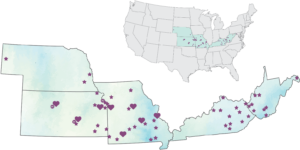 The Kaw Valley is a particular region in the U.S. It refers to the land surrounding the Kansas River in northeastern Kansas, which is where KVC has its roots.
The Kaw Valley is a particular region in the U.S. It refers to the land surrounding the Kansas River in northeastern Kansas, which is where KVC has its roots.
But today, KVC’s reach extends thousands of miles beyond the Kaw Valley. Today our team is 2,400 professionals strong across Kansas, Kentucky, Missouri, Nebraska, West Virginia, and beyond. Thanks to our team and supporters, KVC positively impacts approximately 75,000 people’s lives every year. Through in-home family strengthening services, foster care, adoption, mental health treatment, disability services, and children’s mental health hospitals, we’re giving people hope and helping children and families thrive.
The letters in KVC no longer stand for specific words, but they can still be a useful guide to some of the values that make us unique and effective. These are the types of values that KVC “stands for” these days:
Knowledge:
We help children and families who have experienced trauma such as abuse, neglect, substance abuse and loss. It’s important that instead of offering help that we think will work, we do what we know will work. We use treatment approaches that are rooted in research and validated by evidence.
For example, KVC participated with The Annie E. Casey Foundation, Child Trends, and Dr. Glenn Saxe of New York University on the first-ever longitudinal study on the impact of integrating trauma-informed care into child welfare and mental health services. The five-year study found that KVC’s implementation of trauma-informed care into its foster care and children’s residential treatment programs created positive outcomes for children such as improved emotional and behavior regulation and greater placement stability.
Through the KVC Institute for Health Systems Innovation, we are advancing research in the fields of child welfare and behavioral healthcare. Our goal is to expedite evidence-based practices into the real-world lives of children and families across the U.S. Expertise is central to who we are, what we do, and how we make a measurable difference.
Values:
The primary way KVC shapes its team members and culture is through the use of “KVCisms” or values. You’ve probably heard some of our values before such as, “What would you want for your child?” or “The heart of our work is helping people.” These values cause us to frame each decision with urgency and help us pursue each child’s best interests. Our performance on national child welfare and healthcare outcomes helps validate that these values produce results for children and families.
Our values are summarized by:
- The heart of our work is helping people.
- Our character is built on authenticity and compassion.
- Family connection drives our culture.
- Collaboration fuels our improvement.
- Urgency and innovation mark our approach.
- Diverse perspectives are key to our progress.
- Always asking, “What would you want for your child?”
Connections:
Having permanent, lasting relationships is vital for every human being, and it’s also vital for organizations. KVC believes in building both types of connections for health, strength and long-term wellbeing.
At the individual level, we help surround children with one or more adults who care about them and support them through positive, healthy relationships.
At the organizational level, KVC works in tandem with other national experts to lead the fields of child welfare and behavioral healthcare. By having connections with other leading organizations including the National Council for Mental Wellbeing, Chapin Hall at the University of Chicago, The Joint Commission, Social Current, Child Trends, Open Minds, Children’s Mercy Kansas City, numerous public universities including the University of Kansas and the University of Kentucky, numerous state health and human service agencies, and dozens of other partners, we can achieve much more than we might achieve alone. There is an African proverb that says, “If you want to go fast – go alone. If you want to go far – go together.” This sense of shared mission challenges and encourages us to dream and achieve in big ways.
In Summary, We All Need Connection
So there you have it – KVC was once Kaw Valley Center, but the letters are now simply a way to think about what drives us forward as an international leader in mental healthcare, child welfare, and community health and wellness. Learn more about our leadership, direct services, consulting and training, and more!
KVC is a great place to work! A national survey shows that our 2,400 team members across five states are significantly more engaged and satisfied than the average worker. This is due to KVC’s inspiring mission, tremendous flexibility, inclusive culture, and robust compensation and benefits. Employees rate KVC as HIGH or ABOVE AVERAGE in all 15 key areas of Indeed’s Work Wellbeing scores: Happiness, Purpose, Satisfaction, Stress-free, Appreciation, Learning, Flexibility, Management, Support, Inclusion, Achievement, Belonging, Trust, Energy, and Compensation. Many of KVC’s teams have employee retention rates above 90%. Learn more about KVC careers.
*Editors Note: This post was originally published in May 2017 and has been updated for accuracy and comprehensiveness.





